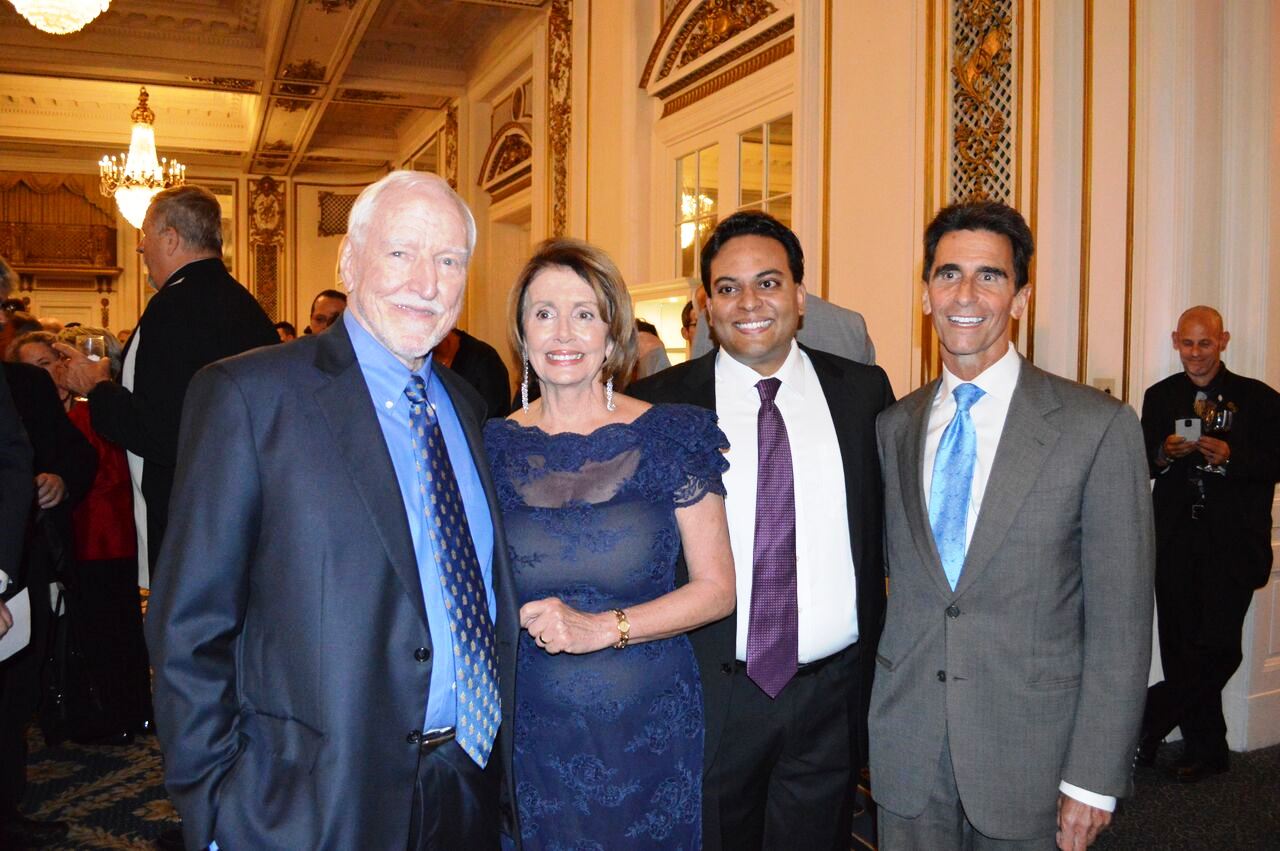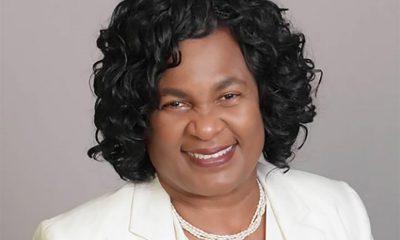Health
Obama AIDS panel bucks White House on drug funds
Resolution calls for $126 million ADAP emergency measure
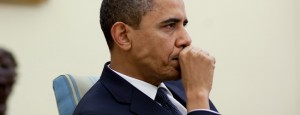
Members of the Presidential Advisory Council on HIV/AIDS this week called on President Obama and Congress to approve $126 million in emergency funds for the struggling AIDS Drug Assistance Program. (Photo by Pete Souza, courtesy White House)
President Obama’s newly appointed Presidential Advisory Council on HIV/AIDS adopted a resolution Tuesday urging the White House and Congress to do something they have been reluctant to do: approve $126 million in emergency funds for the struggling AIDS Drug Assistance Program.
The federal program, which is operated jointly with states, provides subsidies for life-saving anti-retroviral drugs needed by low-income people with HIV and AIDS who lack health insurance coverage.
Due to several developments, including sharp budget cuts by states, a record 1,924 people eligible to enroll in the program in 11 states have been placed on waiting lists as state ADAPs have run out of money to pay for the drugs, state officials have said. The waiting lists are expected to grow in the coming weeks and months.
AIDS activists have criticized the White House and Democratic leaders in Congress for not taking immediate steps to push the emergency funding this year, saying people on the waiting lists face possible life-threatening illnesses related to HIV without their medication.
More than 50 members of the House, including gay Reps. Barney Frank (D-Mass.) and Tammy Baldwin (D-Wis.) sent a petition to the White House earlier this year calling for $126 million in supplemental funds for ADAP in the current fiscal year.
The presidential AIDS panel, known as PACHA, adopted its resolution at a special conference call meeting Tuesday.
The conference call came after some PACHA members complained that the panel was distracted from adopting the resolution and addressing other important business at its previous in-person meeting at the White House in April by administration staffers who overly “stage managed” the meeting, according to insiders familiar with the panel.
The 24-member PACHA includes seven out gay members. It’s chaired by Dr. Helen Gale, a nationally recognized AIDS physician and former top official at the U.S. Centers for Disease Control & Prevention.
“I don’t think the PACHA is being stage managed, but I do think that it is being over handled,” said PACHA member Phill Wilson, executive director of the Black AIDS Institute in Los Angeles.
Wilson said it would be an exaggeration to characterize as a “rebellion” the call by PACHA members for a special meeting this week to vote on the ADAP resolution, as one source familiar with PACHA called it.
But he said PACHA members assigned to a subcommittee that monitors ADAP issues made it clear that it would be unacceptable for the advisory body to wait until its next regularly scheduled meeting in September to take up the ADAP issue.
Wilson and fellow PACHA member A. Cornelius Baker, former executive director of the National Association of People with AIDS and the Whitman-Walker Clinic, said the newly reconstituted PACHA appeared to be having some organizational and logistical problems.
Among other things, Baker and PACHA member Rosie Perez, actress and AIDS activist, expressed concern at the April meeting that White House officials arranged for the meeting to be held in an auditorium at the Eisenhower Executive Office Building next to the White House that was not conducive for members to conduct business.
Most of the first day of the two-day meeting in April was devoted to listening to comments by members of the public, including AIDS activists. Although a precedent for listening to public comments began under the Clinton administration, one AIDS activist attending the April meeting said it evolved into a “chaotic” town hall type meeting that prevented members — who were appointed for their expertise in various aspects of public health, medicine and public policy — from tackling issues such as ADAP.
Sessions on the second day were not open to the public, raising questions that administration staffers violated a federal law that requires all federal government advisory bodies to conduct business in public.
Christopher Bates, PACHA’s staff executive director, told activists who complained about the closed meeting that the session was limited to discussing “administrative” matters and no official business was conducted.
Wilson and Baker said this week that the White House and the Department of Health & Human Services, which has direct supervision over PACHA, were working to correct the problems, with the possibility that new meeting space would be found.
But new organizational and technical issues surfaced during Tuesday’s conference call when an audio muting mechanism prevented members of the public who were approved in advance to speak from being heard by Gale, who presided over the call.
When a roll call vote was taken on the ADAP resolution, some of the PACHA members also could not be heard, alerting the staff that a technical glitch kept the PACHA members’ phone on mute.
As required by a federal advisory body statute, the conference call meeting was announced two weeks earlier in the Federal Register, which instructed people interested in speaking during a public comment period how to dial in to the call.
A technician facilitating the conference call eventually lifted the muting mechanism to allow everyone to speak. But shortly after that happened, someone apparently called the meeting to an end while the phone lines remained open. At least two callers expressed outrage that they were not allowed to speak, and several callers began their own discussion before someone terminated the conference call.
Before the confusion began, Gale announced the roll call vote had been completed and the resolution calling for the $126 million emergency ADAP funds had been approved.
Prior to the discussion and vote on the resolution, HHS official Deborah Parham told call participants the administration would allocate $17.5 million in Ryan White funds in August that states could use for their ADAP programs. She said additional Ryan White funds were available to help struggling states in their overall programs to assist people with HIV/AIDS.
HHS recognizes “the need to improve access to critical HIV/AIDS prescription drugs and we’re working to prevent and ultimately eliminate the need for ADAP waiting lists,” Parham told call participants. But she did not say whether the administration would agree to the $126 million emergency funding allocation for ADAP called for by the PACHA resolution.
President Bill Clinton created PACHA in the 1990s. President George W. Bush retained the panel and continued Clinton’s practice of naming several gays to serve on PACHA, including several gay Republican activists.
The Obama administration did not call any PACHA meetings in its first year in office, prompting some activists to ask if the new administration planned to retain the panel. But in February, the White House disclosed it had dismissed all PACHA members appointed by Bush and introduced what it called a “reconstituted” PACHA with 24 new members.
According to Jeff Crowley, director of the White House Office of National AIDS Policy, the new members were appointed by Health & Human Services Secretary Kathleen Sebelius with White House consultation.
At the first meeting Feb. 2, Sebelius administered the oath of office for members and said she and the White House would utilize PACHA as a “platform for the administration to share our plans and insights” on AIDS programs and proposals.
“Today, I’m pleased to have a new group of experts joining PACHA,” Obama said in a statement released at the February meeting. “And I look forward to hearing from the council about our continued efforts to prevent the spread of HIV infections in the United States and to provide care and treatment to people living with HIV/AIDS around the world.”
Health
UNAIDS to commemorate Zero Discrimination Day’s 10th anniversary
UN agency urges global action to protect human rights
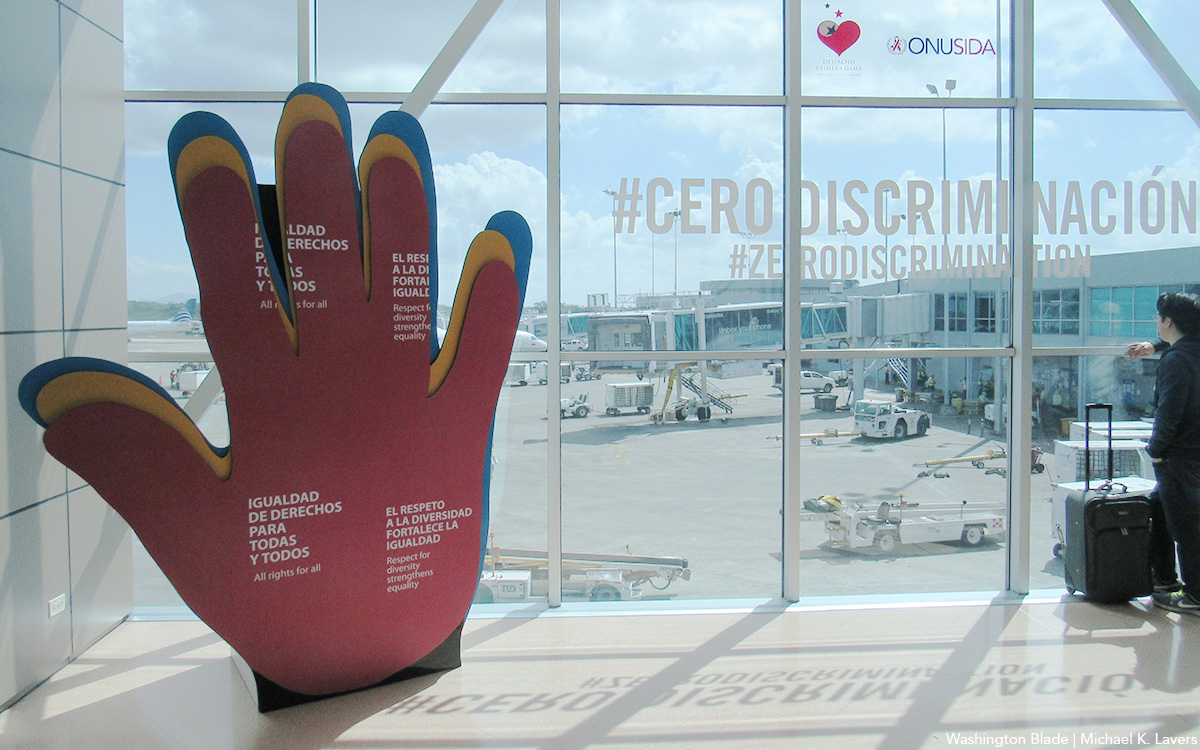
As the world marks the 10th anniversary of Zero Discrimination Day; UNAIDS is sounding the alarm on the increasing threats to human rights, calling for renewed efforts to protect the rights of all individuals as a fundamental step towards ensuring health for everyone.
Established by UNAIDS a decade ago, Zero Discrimination Day aims to promote equality and fairness regardless of gender, age, sexuality, ethnicity or HIV status. The progress achieved over the past years is now in jeopardy, however, due to rising attacks on the rights of women, LGBTQ people and other marginalized communities.
UNAIDS Executive Director Winnie Byanyima emphasized the critical link between protecting human rights and safeguarding public health.
“The attacks on rights are a threat to freedom and democracy and are harmful to health,” she said in a press release. “Stigma and discrimination obstruct HIV prevention, testing, treatment and care and hold back progress towards ending AIDS by 2030. It is only by protecting everyone’s rights that we can protect everyone’s health.”
Despite challenges, there has been notable progress.
At the onset of the AIDS pandemic more than 40 years ago, two-thirds of countries criminalized consensual same-sex sexual relations. They are now decriminalized in two-thirds of countries. An additional 38 countries around the world have pledged to end HIV-related stigma and discrimination, contributing to positive changes that include 50 million more girls attending school compared to 2015.
To sustain and enhance these advancements; UNAIDS urges global support for women’s rights movements, LGBTQ rights, racial justice, economic justice, climate justice and peace initiatives. By standing with communities advocating for their rights, the U.N. aims to reinforce the collective effort towards a more inclusive and equitable world.
Zero Discrimination Day is observed on March 1.
Events and activities that will take place around the world throughout the month will serve as reminders of the essential lesson and call to action: Protecting everyone’s health is synonymous with protecting everyone’s rights.
“Through upholding rights for all, we will be able to achieve the Sustainable Development Goals and secure a safer, fairer, kinder and happier world — for everyone,” said Byanyima.
Health
New CDC report finds transgender women at higher risk for HIV
More than 1,600 people in seven cities surveyed
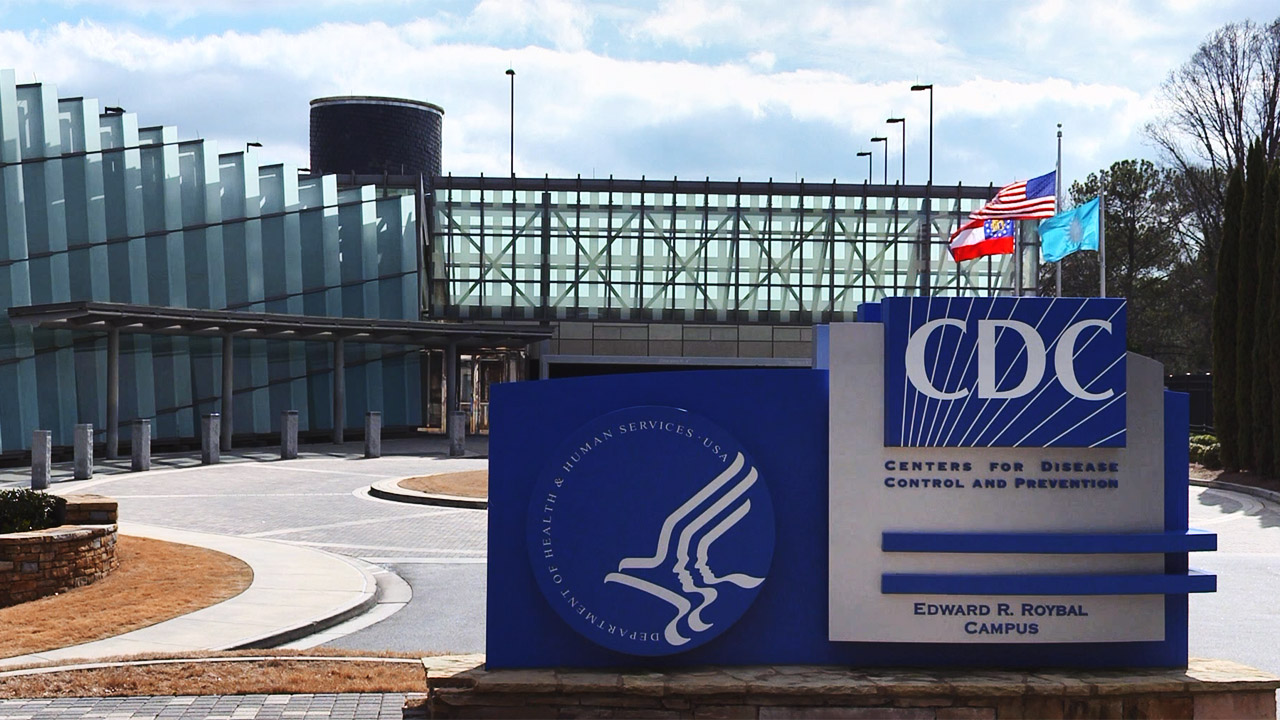
The Centers for Disease Control and Prevention issued a new study report this week that revealed that restricted by employment and housing discrimination and lack of access to needed gender-affirming healthcare for transgender women increasing the risk of contracting HIV.
Researchers reviewed data from a 2019-2020 survey, the National HIV Behavioral Surveillance Among Transgender Women, which found that the demographics of HIV/AIDS have been disproportionally high, especially among Black and Latina trans women, who had experienced employment and housing discrimination coupled with lack of access to gender-affirming healthcare.
The Jan. 25 Morbidity and Mortality Weekly Report was based on data studies of more than 1,600 trans women in seven major urban locales. Participants from Atlanta, Los Angeles, New Orleans, New York, Philadelphia, San Francisco and Seattle were chosen by referrals from people and community-based organizations who knew or were part of the local population of trans women.
The study’s researchers noted: “Employment discrimination occurs at the overlapping nexus of poverty, homelessness, incarceration, health insurance, disability, food insecurity and survival sex work. These issues are interconnected.”
The study stated that trans women’s inability to access quality healthcare, including gender-affirming treatment or access to PrEP, and can expose them to potential incarceration as many turn to “survival sex work” and violence, which increases the risk of contracting HIV.
The study’s author’s pointed out: “When economically marginalized transgender women are refused employment, this refusal cyclically contributes to economic hardships. This analysis …demonstrates the importance of transgender women working and living with dignity and without fear of unfair treatment.”
Health
A Whole New Perspective on Well-Being
The Mather’s team recognizes that everyone’s wellness journey is completely unique to their life experiences and influences.

It’s easy to spot the distinctive, elegant silhouette of The Mather, a Life Plan Community for those 62+ opening this spring in Tysons, Virginia. What is not apparent to the naked eye is The Mather’s unique wellness philosophy, which is literally built into the community.
The Mather’s team recognizes that everyone’s wellness journey is completely unique to their life experiences and influences.
Nature is one of the important factors that contribute to well-being. So The Mather is incorporating biophilic design—a design approach to facilitate access to nature or things that replicate natural patterns. This can include interior spaces with sightlines to a garden, choosing natural wood and stone as interior materials, or incorporating fragrant flowers and plants indoors to spark memories and provide tactile opportunities such as gardening.

“Providing biophilic design within interior settings connects residents to the natural world,” says Mary Leary, CEO and President of Mather, the organization behind The Mather. “Research shows that a connection to nature provides positive benefits to mental states and overall well-being. At The Mather, biophilic design is the intersection of buildings and programs with nature in an urban setting.”
“The Mather is attracting a diverse group of older adults,” says Mary. “As a result, we aim to incorporate wellness practices from around the world, including Wyda movement theory of the Celtic Druids, which helps people achieve harmony with nature and contentment through mindfulness.” This holistic regenerative approach is similar to Qi Gong and yoga, while born in a different part of the world. Mather Institute has a special focus on mindfulness to support older adults’ practice of present moment awareness, which can lead to increased overall well-being, compassion, and joy.
A very different example of a wellness offering at The Mather is the Gharieni Welnamis spa wave bed, which uses computer-controlled vibrational therapy and audio frequencies to train the brain to relax. “The bed increases mindfulness, concentration, and creativity—all of which support our mission of creating Ways to Age Well,SM” says Mary.
These and other personalized ways to wellness will ensure that residents of The Mather can choose from seemingly countless ways to focus on their well-being. In other words, the sky’s the limit!
-

 State Department2 days ago
State Department2 days agoState Department releases annual human rights report
-

 Maryland4 days ago
Maryland4 days agoJoe Vogel campaign holds ‘Big Gay Canvass Kickoff’
-

 Politics3 days ago
Politics3 days agoSmithsonian staff concerned about future of LGBTQ programming amid GOP scrutiny
-

 The White House1 day ago
The White House1 day agoWhite House debuts action plan targeting pollutants in drinking water



